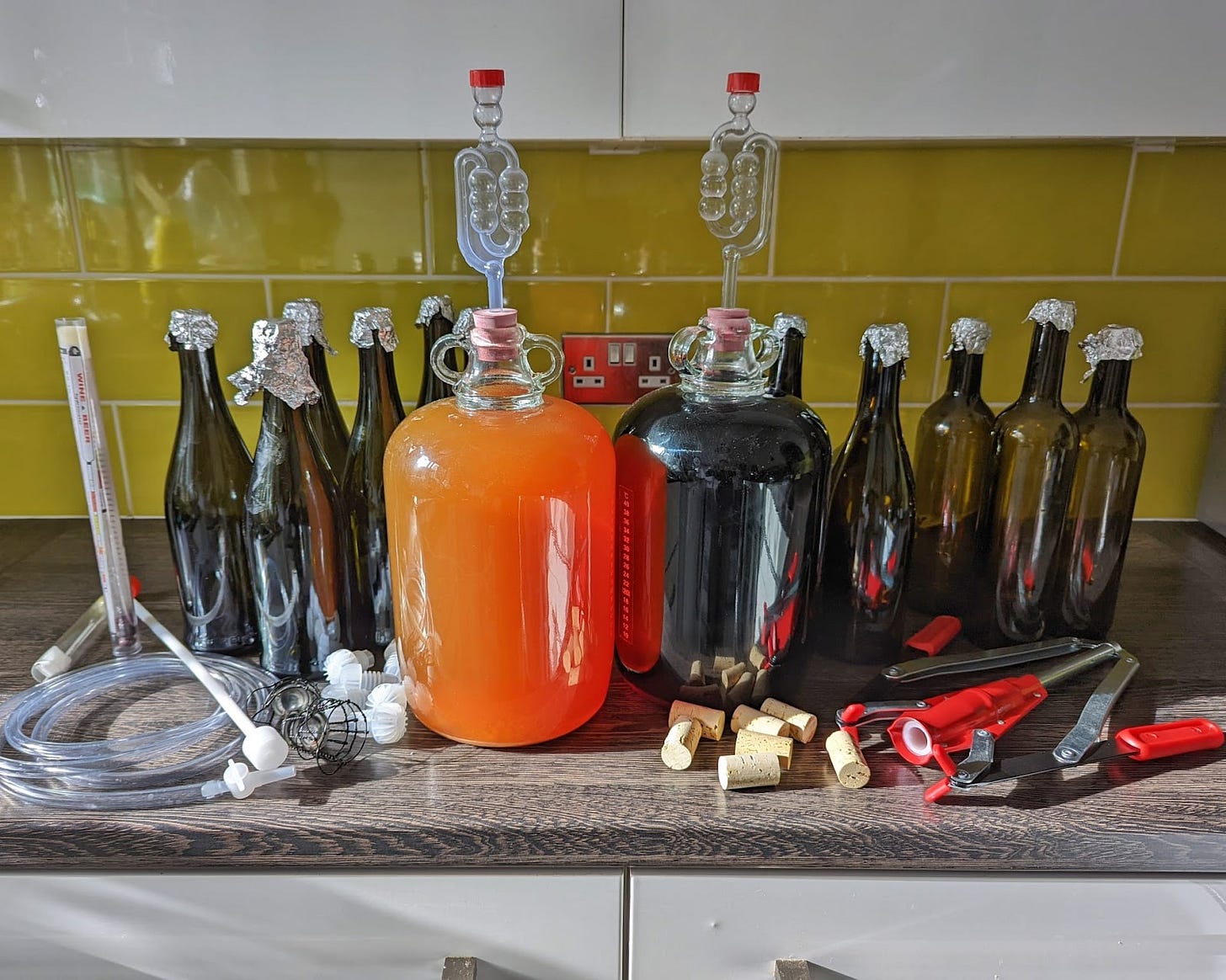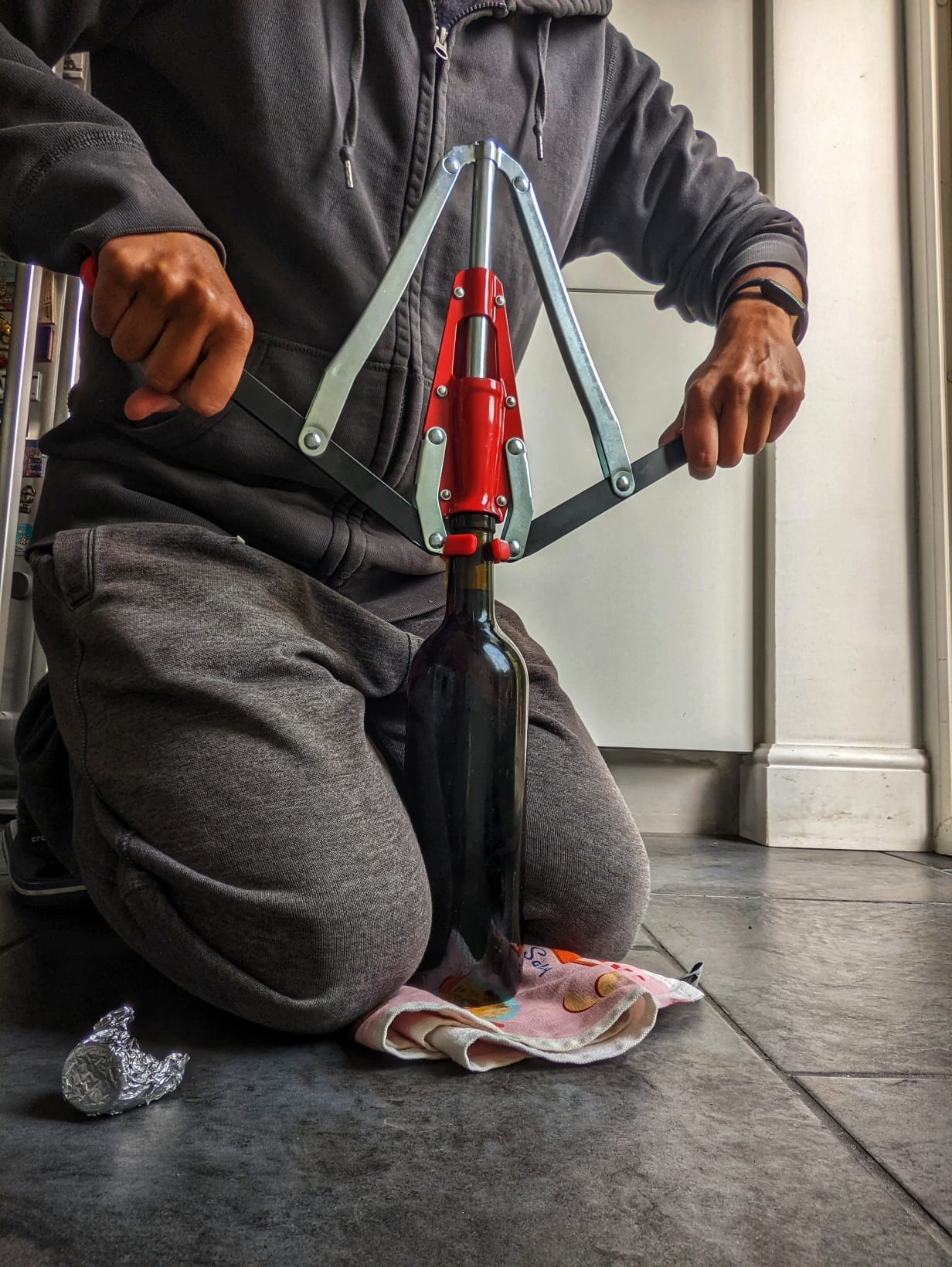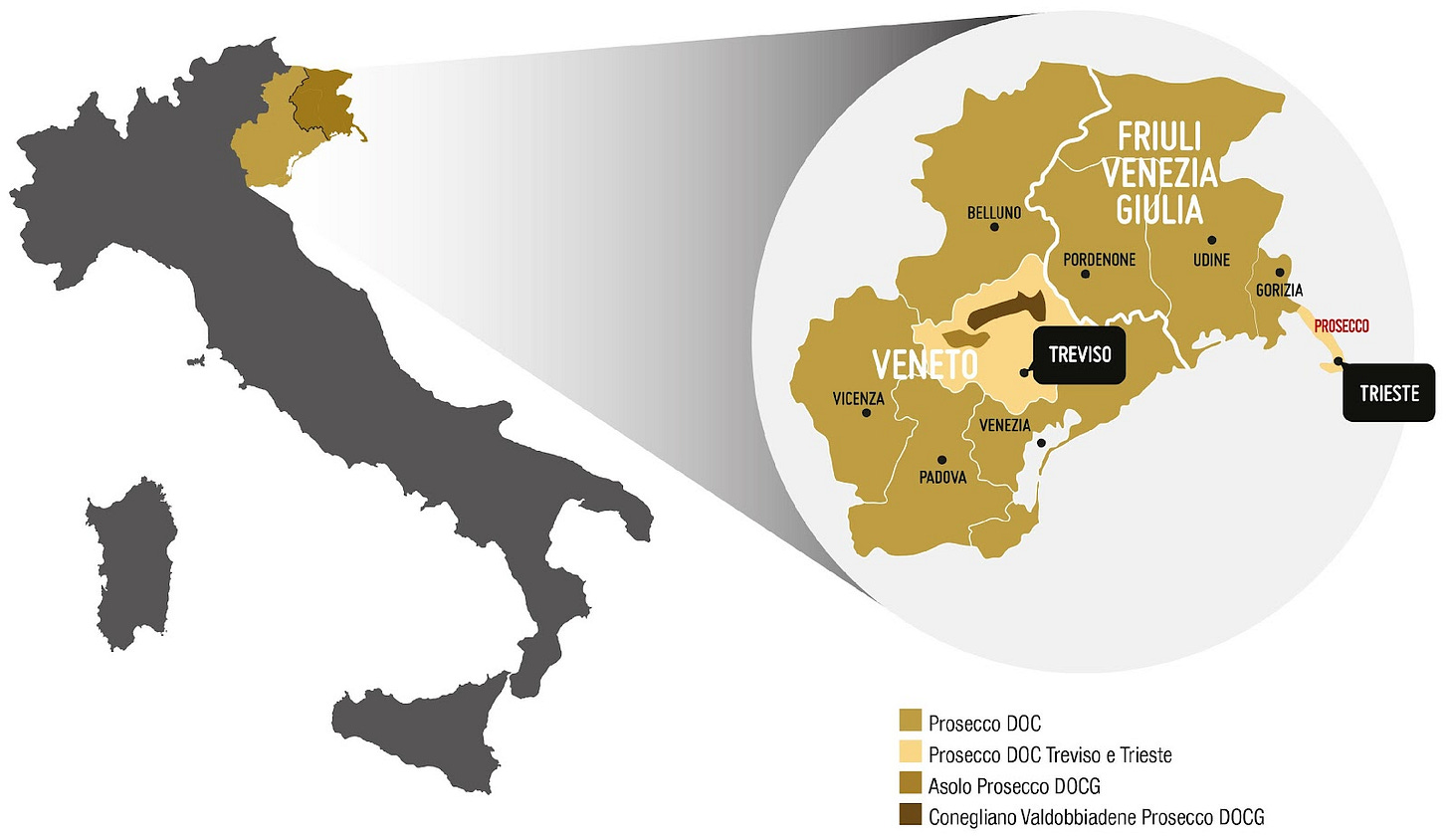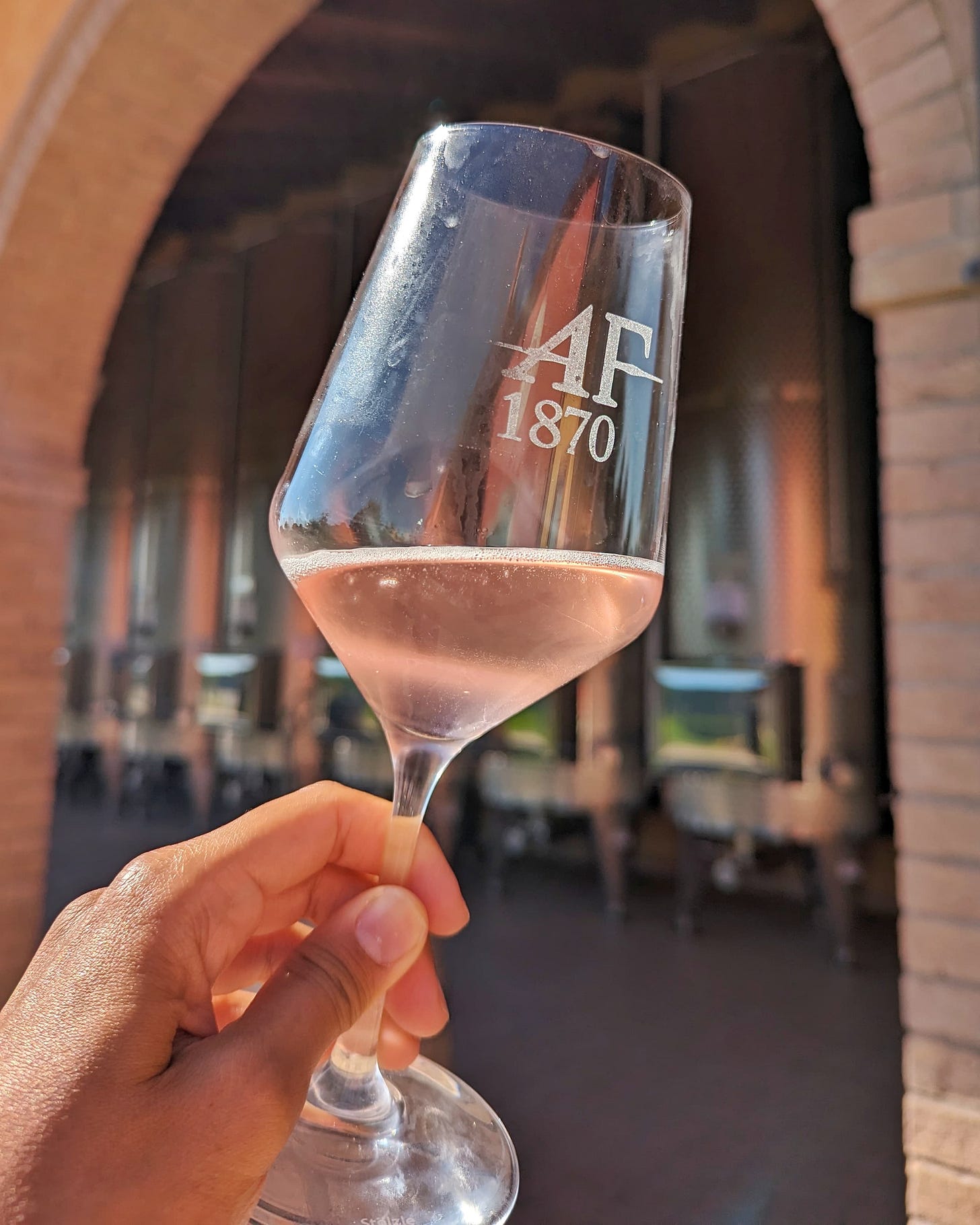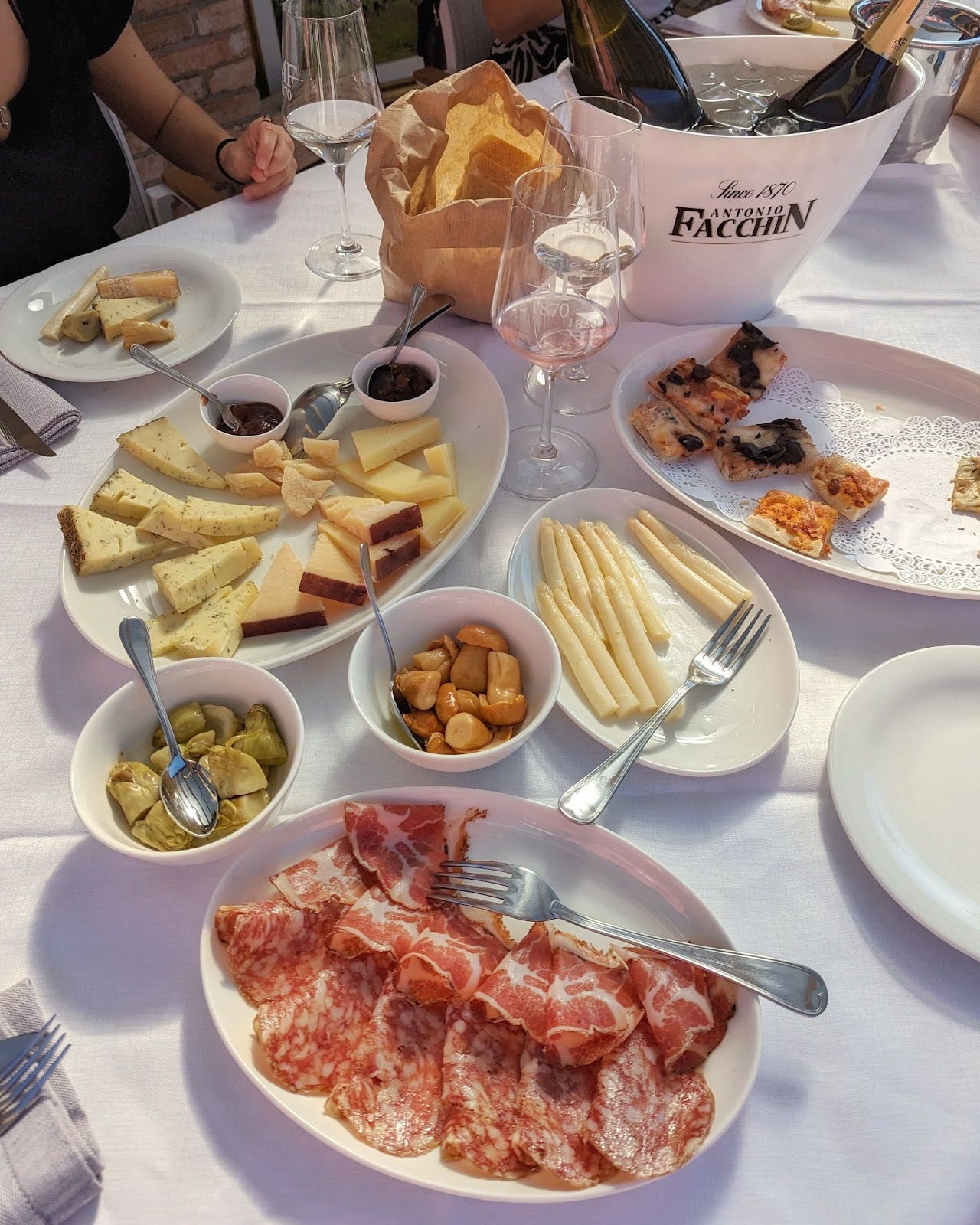Italy's finest sparkling wine: all you need to know
Have I mentioned I make wine? Plus a very special giveaway
Hello! This is Leyla from A Day Well Spent, a newsletter seeking pathways to more purposeful living.
Here’s what landed in subscriber inboxes the past couple of weeks:
you’re not getting old, you just need to stretch — this was popular
celebrating and sharing the cool stuff we have recently learnt
after being presented with a restaurant menu of 250 items, I wrote a piece called the tyranny of too much choice
setting our New Moon intentions for the new lunar cycle
If you’re reading this by chance — welcome! You can enter your email below to ensure you never miss my twice weekly posts (Thursdays and Sundays).
Allow me to whet your appetite and set the scene for a delightful Italian tipple or two with today’s post, where we’ll be learning some cool things about one of the world’s most loved sparkling wines.
Which also has a quite special giveaway further down.
As always thank you for being here and I hope you enjoy this post!
Just call me your neighbourhood winemaker
Have I mentioned I make my own wine?
No? Really?
This is surprising, considering I like to drop this fact into as many conversations as I can get away with because – I think we can all agree – it makes me at least 50% cooler than you originally thought I was.
I say wine. It is in fact something called country wine which is the term given to wine made from anything other than grapes. And did you know, you can make wine from pretty much any plant? You can make mango wine, strawberry wine, gooseberry wine, carrot wine, oak leaf wine, even potato wine.
I can’t say I’ve ever tried any of the above, but I know they exist in the dark corners of the homes of enthusiastic home brewers across the world.
The country wines I make are generally with fruits and berries I forage from the wild that have a long history of being transformed into wine in the UK, which include sloes (aka blackthorns), blackberries and the queen of all country wine fruits, the elderberry1.
I have also made a wild-fermented natural sparkling rosehip wine. Yes, rosehips! Yes, sparkling!
This is not that easy to do and there’s a real risk of bottles exploding if you don’t get your calculations right. But I managed it, so I was really quite pleased with this wine especially.
Here’s that whole 12 month process in 40 seconds:
I currently have six demijohns (the name for the big glass jars wine ferments in) blipping away in various locations around my home, including two under my husband’s desk and one shoehorned behind the bedroom fern.
Each containing six bottles worth of wine I — and those dear to me — shall start enjoying after the next year or so.
All of this is to say, I think wine and everything about it, is kind of amazing
I also think I started appreciating it more once I started making it myself, understanding the process of production and just how long you have to wait; making wine is an excellent exercise in the art of patience.
‘Wine is bottled poetry’, so said the Victorian poet and novelist Robert Louis Stevenson. It’s a narrative that weaves together the threads of history and culture over millennia. It is a timeless elixir with origins deeply rooted in ancient history. Recent discoveries near Tbilisi in Georgia included pottery fragments from grape wine-making that were 8000 years old.
It is also a form of time travel, a whole growing season and the characteristics of a specific place preserved in a glass time capsule, re-lived when the cork is removed and the wine is enjoyed years after it was produced.
It is equal parts bonkers and brilliant to me that I make this alcohol in my kitchen in ways not too dissimilar to how it was done by the ancient Mesopotamians in around 6000 BCE.
Wine is something I love to experience, be a part of and learn about.
This doesn’t mean I am any kind of expert, very far from it. I struggle to decipher the nuances of flavour profiles and the French words on labels. But none of that is necessary to enjoy it; I don’t know much about wine, but I know what I like.
A special invitation
My ‘day job’ is around food and travel (this is what I do). So when I first heard from the consortium of Prosecco DOC, who got in touch with a proposition of working together, you can imagine my reaction.
They wanted me to visit Italy and learn about one of the world’s most loved sparkling wines — Prosecco DOC.
I would be heading to the area of northeast Italy lying between the Dolomites and the Adriatic, spending time in the city of Treviso (the heartland of where this wine is produced and also where tiramisu2 is from), visiting vineyards, exploring the seaport city of Trieste (Slovenia is just 8 km / 5 miles east of it), taking part in the largest sailing race in the world, learning more about this much loved wine and partaking in quite a lot of tasting.
I know what you’re thinking, tough gig.
I should make it very clear I have been paid by Prosecco DOC for working with them because – it's my job. But I still wanted to write about some of the cool stuff I learnt on this trip as I found it all very interesting.
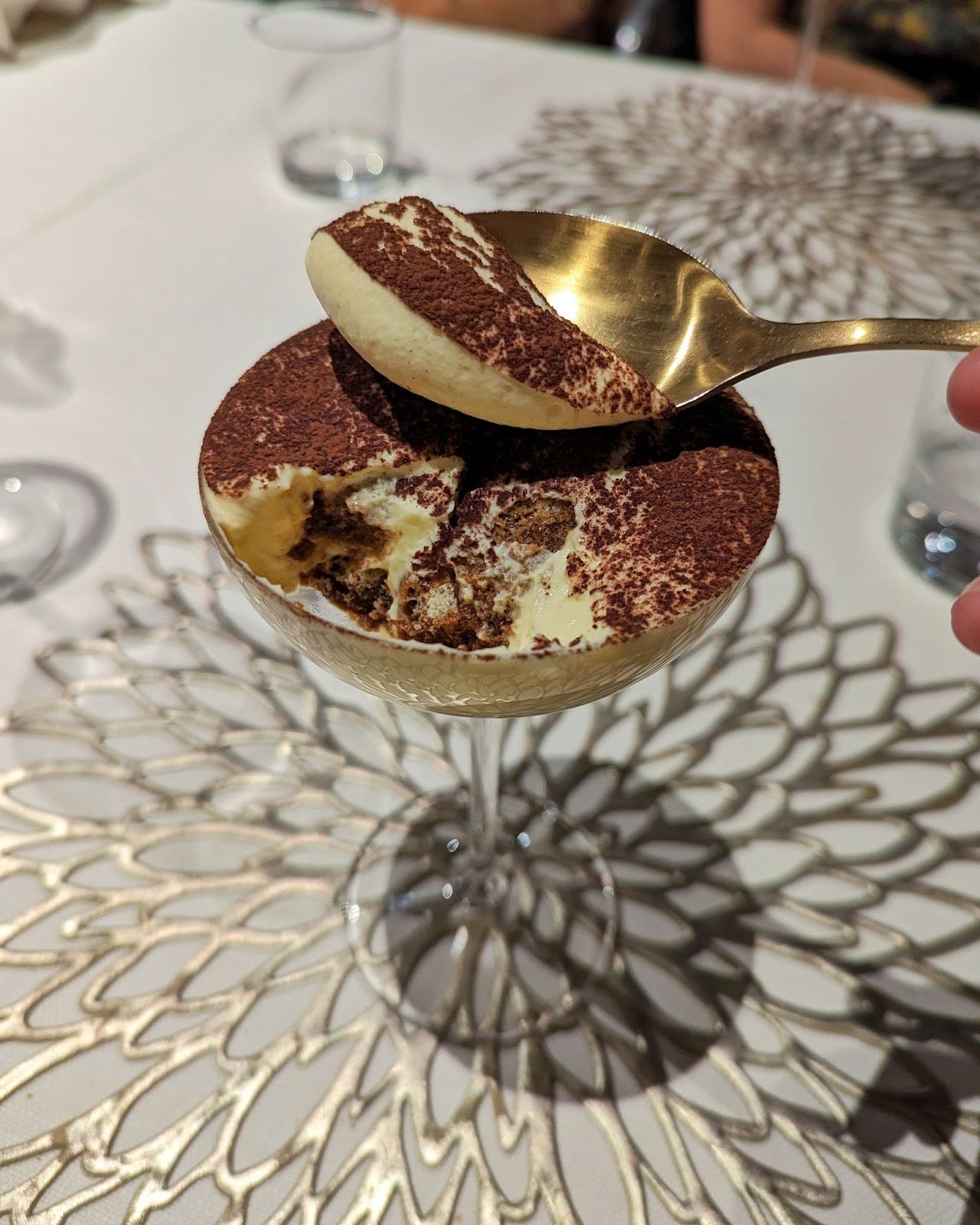
A really quite special giveaway
When I told the Prosecco DOC guys I would be writing this, I thought I’d take the opportunity to ask whether they might like to offer a little something that I could run as a giveaway.
They loved the idea and the little something is in fact quite a big something – one lucky and beloved reader of A Day Well Spent will win a whole case (that’s six bottles!) of Prosecco DOC.
Delivery can be anywhere in the US or Europe - more info on how to enter further down.
This is a pretty amazing giveaway - how exciting!
To get the taste buds primed, here are some fascinating and surprising things I learnt about Prosecco DOC.
1. It can only be grown and produced in a very specific part of Italy
Many of us will already know that Prosecco DOC is a sparkling wine from Italy. But did you know it can only be produced in a very specific area located in the northeast of the country?
This is where the importance of the ‘DOC’ part of the name comes in, which stands for Denominazione di Origine Controllata (Protected Designation of Origin).
If the DOC is on the label, you have the Italian government’s confirmation that the wine you are drinking has indeed come from within this area.
More precisely, we’re talking about four provinces in Friuli Venezia Giulia (Gorizia, Pordenone, Trieste and Udine) and five provinces in Veneto (Belluno, Padua, Treviso, Venice, Vicenza) - it’s these places that have the ideal climate and guarantee the high quality of the wine.
Anywhere outside this area and the wine is not Prosecco DOC.
So if your bottle of wine only has the word Prosecco and not Prosecco DOC on the label, it is trying to masquerade as the real deal. They are out there, don’t be duped!
2. It is also only authentic if sold in a glass bottle and with a government label seal
Think you’re drinking the stuff out of a can or from a tap? Yeah, that’s not the wine you think it is.
You also need to look for the blue Prosecco DOC government seal on the neck of the bottle, which guarantees it is indeed what it is claiming to be.
3. It is a key ingredient in the Italian wine-based cocktail, the Classic Spritz
A spritz is what is commonly served as an aperitif in northeast Italy and as
writes in her beautiful book Pomegranates & Artichokes:‘A spritz should be an orange accessory you wear in your hand that doesn’t leave a mark, other than enticing your appetite a bit… you order a spritz when you want to nibble on something, or to signal it’s time for relaxation to begin’.
Her recipe for one Classic Spritz is:
60ml Campari, Aperol or other red-orange bitters
90ml Prosecco DOC
A splash of fizzy water
A slice of orange
On our first night in Treviso, our evening in local eatery Osteria Arman included: a Classic Spritz; a glass of Prosecco DOC; polenta; pasta with beans and Treviso radicchio; and baccalà alla vicentina — a Venetian dish of stock fish, anchovies, onions, milk and cheese.
You can’t really get more northeast Italy than that.
4. It is made with an indigenous variety of grape and a rosé version has only recently been introduced
For a wine to be Prosecco DOC, at least 85% of it must be made with a grape variety called Glera, an indigenous grape that has been grown in the northeast of Italy since Roman times.
Bunches of Glera grapes are large, long, loosely packed and ripen to bright yellow. Quite beautiful!
Historically, Prosecco DOC has always been a sparkling white wine.
But since the grape harvests of 2017, the first experiments into a rosé began. A few years later in October 2020, Prosecco DOC Rosé came to be and was available for sale and for export.
The rosé versions are essentially the white wine made from the Glera grapes above, with the addition of 10-15% of red wine made from Pinot Nero / Noir grapes.
I tried a Prosecco DOC Rosé for the first time this summer and again on this trip and one of my absolute favourites (pictured above) was the Extra Brut from the winery Antonio Facchin, one of the longest-lived wineries in the Prosecco growing region. That colour!
It was over this divine lunch where I also discovered a wine-soaked cheese called ubriaco which translates to 'drunken' - so good and just look at how pleased I am with myself and the whole affair.
5. The USA and UK are the biggest consumers in the world
In 2022, 24% of all exports of Prosecco DOC went to the USA and 23% went to the UK.
The next biggest market is Germany at just under 9%, for context!
6. There is actually a town in Italy called Prosecco
Prosecco is a small town in the Province of Trieste, in the extreme northeast of the Italian peninsula and the first mentions of wine production here date back to the mid 13th century, when the town was called 'Prosech' or 'Prosecum'.
The town of Prosecco is a tiny dot in the expansive area that covers the whole growing region. But I did get to visit a stunning Glera vineyard there, perched on the slope of a cliff overlooking the Adriatic Sea.
A Prosecco grape vineyard within the town of Prosecco, how cool.
7. There are three levels of bubbly-ness
Firstly, there is Prosecco DOC Spumante which is the most famous and widespread type with fine and persistent bubbles.
This is the one you have most probably had before.
But there is also the less common Prosecco DOC Frizzante which has light and less persistent bubbles. I tried one of these for the first time during this trip - delightful!
And there is - believe it or not - a Prosecco DOC Tranquillo i.e. a wine with no bubbles at all. Only a very small amount of this is produced and its hard to even find it in Italy. But it does exist.
All the Prosecco DOCs pair perfectly with the kind of simple meals that call for little more than an arrangement of a few delicious cured meats, tasty cheeses, bread, preserved vegetables and maybe some seafood.
This is one of my favourite ways of eating and it was frequently how I enjoyed this wine during this trip - joyous.
8. It can be a lot less sweet than you might be used to
This was a revelation to me.
It turns out the most famous and widely consumed style of this wine is Extra Dry which despite the name, is actually a medium sweet wine. This is most likely the style of Prosecco you have consumed, and this now explains why I’ve always found this wine to be just a tad too sweet for my palate.
It turns out there are three more styles with less sugar called Brut, Extra Brut and Brut Nature, the last having the least residual sugar of the lot.
I tried Brut and Extra Brut styles on this trip and adored them. So these are the ones I’ll be looking out for from now on.
The giveaway
OK I’m excited about this!
You guys, my beloved subscribers, have a chance to win a whole case (that’s six bottles!) of wonderful Prosecco DOC, three of them will be white and three will be a rosé.
And the case can be shipped to anywhere in the USA or Europe.
Just as we are starting to think about the upcoming festive period too. A bottle could also make a great gift for someone special.
To enter you need to do the following 3 quick and little things:




